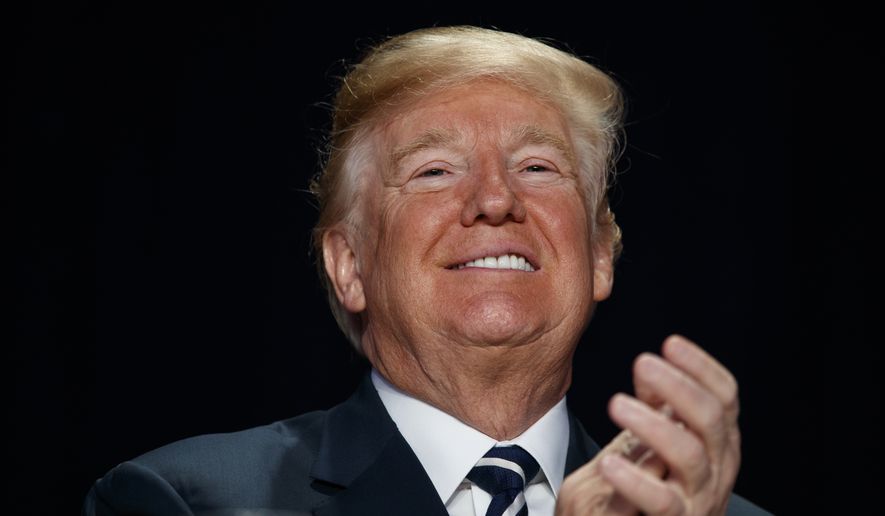President Trump is hyping the economic boost from a massive infrastructure program, applying pressure on Capitol Hill Democrats to get on board or risk missing out as they did on tax cuts that are increasingly popular with voters.
Armed with a study from his Council of Economic Advisers that forecasts significant job growth from the $1.5 trillion infrastructure plan, Mr. Trump will make the pitch Thursday in front of a crowd of construction workers in Richfield, Ohio.
It kicks off a series of road trips to whip up public support and spur Congress, particularly Democrats, to begin moving the plan this year with piecemeal legislation.
The White House wants to get as much of the program through Congress as possible before midterm elections in November. If necessary, Mr. Trump will push more legislation next year.
“We never anticipated this would be an easy process. But the president is in it for the long haul,” said a senior administration official who briefed reporters about the Ohio event.
The president’s message will focus on the “economic agenda that he has put forward and how that will unleash commerce and jobs and grow the wages and opportunities for our workers,” said the official.
In the study released Wednesday, the president’s economists estimated that the 10-year infrastructure program could add 0.1 to 0.2 percentage points to average annual growth in gross domestic product. That is tens of billions of dollars in the nation’s more than $19 trillion economy.
Mr. Trump will deliver the remarks at a training center for the International Union of Operating Engineers Local 18, where members are heavy equipment operators, mechanics and surveyors in the construction industry.
Mr. Trump will hammer home the council’s finding that the investment in rebuilding America’s crumbling highways, bridges and water systems will create 290,000 to 414,000 construction jobs during the 10-year period.
Other key findings in the report:
⦁ An estimated 350,000 infrastructure workers are currently unemployed and available to fill positions.
⦁ The jobs would overwhelmingly benefit workers with only a high school degree or less, providing them 14 percent higher pay than other jobs for workers without a college education.
Mr. Trump proposed spending $200 billion to leverage a total investment of $1.5 trillion from state and local governments. He also wants to streamline the federal approval process, cutting the time it takes to permit a basic roadway from more than five years to two years or less, which would dramatically reduce costs.
The biggest obstacle to the president’s plan is Senate Democrats. They say it shifts too much of the burden to state governments and rolls back environmental protections.
Senate Democrats made a counterproposal for $1 trillion in direct federal spending on infrastructure. They would pay for it by revoking the tax cut for the top income bracket.
Senate Minority Leader Charles E. Schumer, New York Democrat, said the president’s plan was a nonstarter and his party’s plan was better.
“Our plan would do three things compared to the president. First, create many more jobs than the Trump plan. Second, build many more projects than the Trump plan. And third, build the infrastructure America actually needs, not just what Republican donors and private investors can profit from,” Mr. Schumer said.
Mr. Trump hopes his road show will help break up the solid Democratic opposition, peeling off the party’s most vulnerable incumbents running in states he carried easily in 2016.
The president’s strategy got high marks from lobby shops pushing the plan.
“History suggests if the president continues to pound the pavement in the states pushing for his infrastructure plan, he will be successful,” said Kerri Leininger, chief lobbyist for the National Ready Mixed Concrete Association.
Jay Timmons, president of the National Association of Manufacturers, echoed the president’s economic message.
“Like tax reform, a significant investment in our nation’s infrastructure has the power to supercharge manufacturing in America by improving our competitiveness while also making our families and communities safer,” Mr. Timmons said. “The administration has already delivered on some important permitting reforms, and the president’s call for a substantial $1.5 trillion investment is the kind of leadership manufacturers have wanted for a very long time.”
• S.A. Miller can be reached at smiller@washingtontimes.com.




Please read our comment policy before commenting.